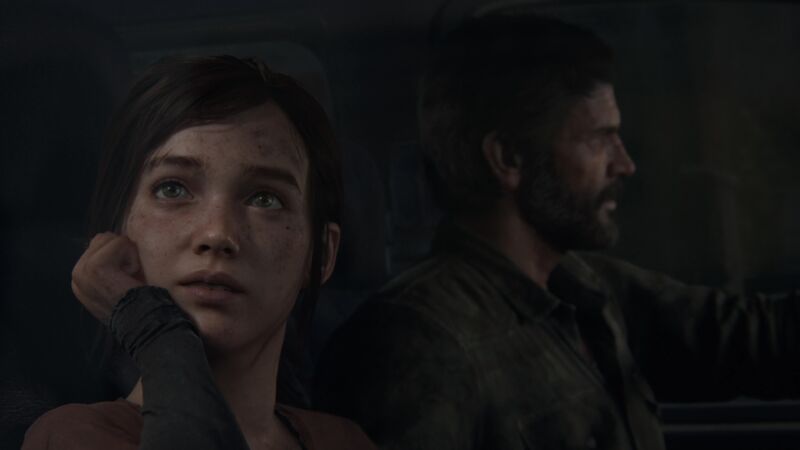
A little over a decade ago, developer Naughty Dog diverged from its base of amusing, swashbuckling video games by revealing its most intense project yet: The Last of Us. The game’s first-look trailer, which premiered at E3 2012, appeared almost too good to be true.
In some ways, this new series looked like the stunning Uncharted games we’d already seen on the PlayStation 3. It was full of realistic characters, detailed environments, and convincing movie-like dialogue. But this wasn’t a shooting gallery interrupted by wild train sequences and epic climbs up mountains. Instead, TLOU appeared to host the tensest and most brutal combat ever seen on a gaming console. A camera dramatically swung around two survivors of an apocalypse, and these resource-starved protagonists tiptoed around dangerous foes (humans and zombies alike), always one low-on-ammo gun jam or wrong step away from certain doom.
One year later, the game launched to accolades and high sales figures, but it didn’t quite resemble that dramatically staged “real gameplay” trailer. The final game’s enemy AI, battle choreography, and presentation of player choices felt more video gamey than we saw in the trailer.
I remembered that old sense of disappointment while I played The Last Of Us Pt. 1, this week’s PS5 remake of the 2013 original. Honestly, there were moments while I tested this note-for-note remake where I felt adrift, enough so that I saw cracks in its handsome, “current-gen” facade. This is not a perfect remake, and it may leave both new players and Naughty Dog diehards disappointed in some respects.
But when I finally got far enough in the dark, compelling campaign to relive its jump-scare corridors and epic battles and saw the progress that had been made since 2013, I got it. TLOU Pt. 1 is a rare example of a gaming publisher pointing to a classic “bullshot” trailer, then telling a team of developers, “You get to finish the job. You get to make this look and feel like that amazing trailer.” And in enough respects, Naughty Dog has done just that.
Grotesque yet beautiful
-
In any other video game, this would be a beautiful moment to stop and linger on. Not so much with The Last Of Us Pt 1, even if it looks this handsomely lit and shaded.
-
Impressive reflection effects during a dramatic moment.
-
Some people love to watch the world burn… when there’s proper reflection technology involved, anyway.
-
A nice sunset glows appropriately in this scene.
-
Life begins anew, and its lighting and shadow model is excellent.
As far as remakes go, TLOU Pt 1 splits the difference between “wholesale rework” and “massive touch-up.” In terms of narrative and world design, most of the original game has been preserved. Environments, conversations, puzzles, hidden collectibles, and even codes to locked safes are the same.
That sales pitch may remind you of another remake project that jumped from PS3 to PS5: Demon’s Souls. The 2009 original on PS3 remains so beloved on a mechanical level that its 2020 remake team was careful to leave combat encounters and mechanics mostly alone. But where Demon’s Souls 2020 made jaws drop with its massive visual leap, TLOU Pt 1 has a slight problem: Its source material was already ahead of its time.
Naughty Dog spent years cutting its teeth on three Uncharted games on the PS3, and the original TLOU was the console’s grotesque-yet-beautiful swan song, a game that was able to squeeze incredible environments and dramatic stories out of Sony’s famously cantankerous console. The game eventually received a native PS4 version, which merely bumped the resolution and frame rates, yet even this simple port turned out to be one of the PS4 generation’s prettier games for a few years.
So we’re not looking at something like Demon’s Souls or even Link’s Awakening as remade on the Switch—where the graphical foundation is so massively shifted that you can’t help but gawk at it. TLOU Pt 1‘s graphical leaps are impressive, but they may pass you by if you’re not constantly flipping back and forth between the original material. To make my own point, I tested the new version for hours before going back to compare, at which point I realized I was remembering the PS3 original through rose-tinted glasses. The new version’s upgrades are so organic that they appear without much fanfare, as if this is how the game originally looked.
https://arstechnica.com/?p=1877139

